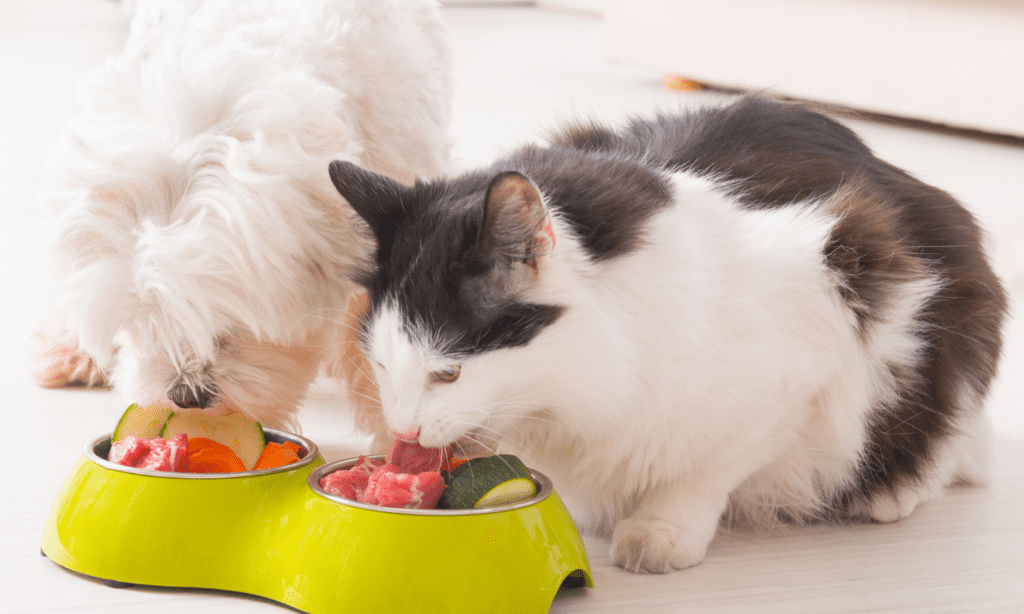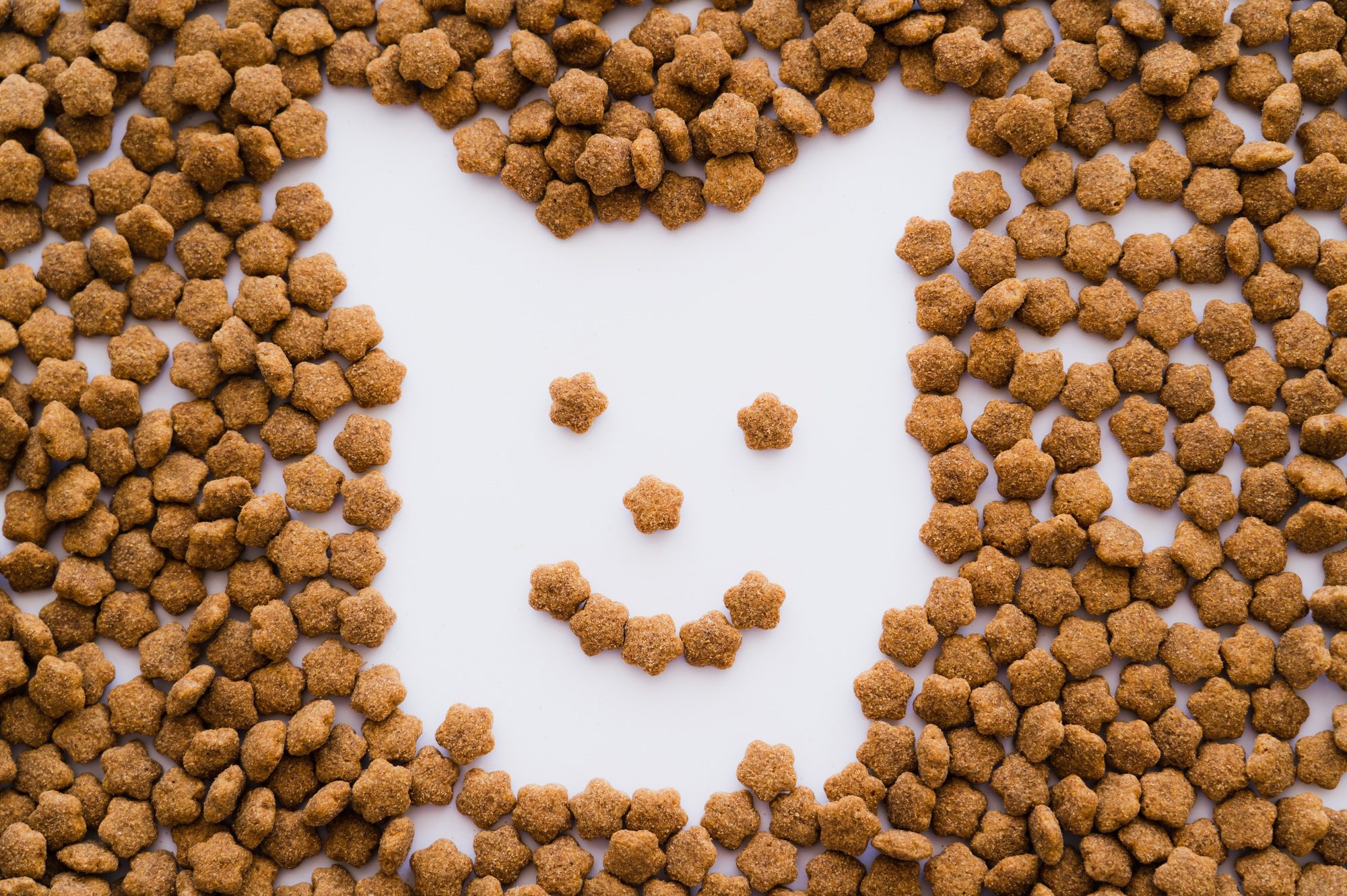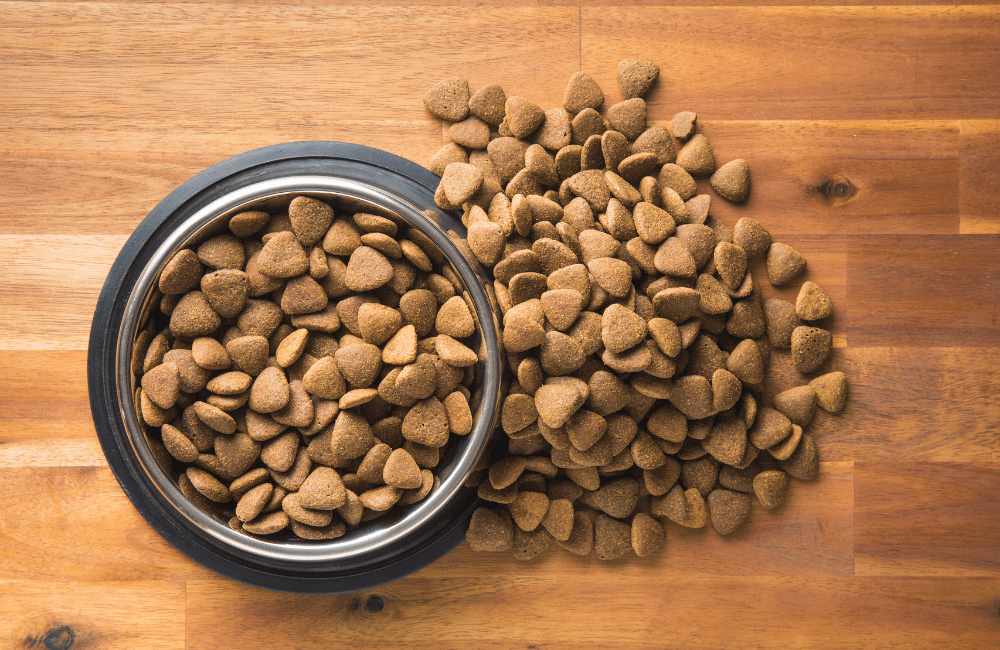Pet Food from Multiple Angles
Types of Pet Food
Keywords: pet food selection, high-quality pet food, choosing pet food, pet nutrition, pet health, pet size, pet age, pet’s nutritional needs, pet food ingredients, pet food packaging, pet food quality, pet food characteristics, pet food tips
Nutritionally balanced pet food is formulated into various types of feeds based on the different nutritional needs and dietary characteristics of pets of different ages, breeds, and physiological stages. It is generally divided into dry pet food, semi-moist pet food, canned pet food, and prescription pet food.
Dry Pet Food
Mostly refers to expanded pellet feed or block feed, with an energy content of over 12,560 J per kg of feed and a water content of 10-15%. It can be used as the main food for pets, meeting the needs of pets of different ages, growth stages, and weights. It can be stored at room temperature after being treated for preservation and is convenient to use.
Semi-Moist Pet Food
Often shaped like round cakes or similar to meat appearance. This type of food has a water content of about 25%, low energy, and a balanced nutrition. It can be stored at room temperature. It has a less pronounced odor compared to canned food and is conveniently packaged for individual use.
Canned Pet Food
Canned pet food is produced from animal products, aquatic products, plant cereals, legumes or their by-products, fats or oils, minerals, and vitamins. It has a water content of 75-80% and comes in two types: complete feed and pure meat feed. It is generally used as a supplement (snack) and should be refrigerated to prevent spoilage.
Prescription Pet Food
These are special formula foods, prescription diets, “professional prescription” products, or health foods. These types of pet foods are formulated for different ages, physiological needs, diseases, and causes. They are commonly found in dry pellets or small packages. Such products should be used under the guidance of a veterinarian.
Dry pet food is the most affordable and suitable for most consumers. Semi-moist pet food has a good taste but is less easy to preserve, making it suitable for puppies and priced between dry food and canned food. Canned pet food is well-balanced, palatable, and relatively expensive. Prescription pet food must be used under veterinary guidance due to its special functions.

How to Select High-Quality Pet Food from Different Angles?
Based on Pet Size
Pets of different sizes have varying nutritional needs, so their food choices should be differentiated accordingly.
(1) Small pets grow quickly and require high energy, making pet foods with high animal protein content suitable. Small pets have smaller mouths and teeth, so food particles should be small or suitable for them. Choosing products with a slightly harder texture can promote dental health and reduce oral diseases.
(2) Medium-sized pets’ food selection should consider their activity levels. Pets with higher activity levels have larger nutritional requirements.
(3) Large pets have larger bodies and require nutrients for bone growth. To maintain their bone and joint health, they need rich sources of calcium, minerals, and easily digestible animal proteins. High-calcium and high-protein pet foods are suitable for large pets.
Based on Pet Age
Different growth stages of pets require different nutritional needs. Choose pet food that is suitable for the pet’s age.
Based on Pet’s Nutritional Condition
The choice of pet food should be based on the pet’s physical condition.
(1) Overweight pets should choose low-fat, low-cholesterol, and low-protein products. Underweight pets should choose products with slightly higher protein and fat content for better nutrition.
(2) Pets with poor digestion can benefit from products containing prebiotic ingredients that promote beneficial bacteria growth and suppress harmful bacteria, thus protecting gastrointestinal health.
(3) For weaker pets, products containing ingredients such as yeast beta-glucan can enhance immunity and reduce the likelihood of getting sick.
Based on Consumer’s Economic Situation
The price of pet food is determined by the quality of raw materials used in manufacturing, which also defines the grade of the pet food. Prices are also affected by advertising costs, shipping fees, import tariffs, value-added taxes, and sales aspects. These costs are factored into the product. Raising a pet is a long-term process, not just a temporary feeding situation. Consumers should purchase relatively higher-quality pet food according to their economic conditions.
Characteristics of High-Quality Pet Food
Attention to Packaging Appearance
High-quality pet food packaging is designed and manufactured with moisture-resistant materials and an exquisite appearance.
Clear Ingredients
High-quality pet food clearly and comprehensively labels its ingredients, including high-quality sources of meat protein, with the type of meat clearly stated on the packaging. The ingredient list is usually displayed on the back of the packaging, allowing consumers to understand the product’s composition and quality. Ingredient order and other details should adhere to the standards of the Ministry of Agriculture and Rural Affairs’ “Pet Feed Label Regulations.”
Clear Grain Raw Material Source
High-quality dog food packaging clearly indicates the source of the raw materials used. The first two items in the ingredient list should include at least one type of fresh meat. Vague descriptions of ingredients, such as meat meal, meat by-products, poultry meal, or poultry by-products, should be avoided, as they indicate unclear ingredient sources.
Natural Fragrance
Lower-grade dog food often contains chemical additives that emit a strong artificial fragrance when opened. High-quality dog food, when opened, releases a natural aroma from carefully selected ingredients, enticing the dog’s appetite. High-quality dog food has uniform color and plump grains with a glossy appearance. Pressing the grains should not leave any color on your fingers; if it does, it might contain artificial colors. Upon opening the packaging, a subtle meaty or fishy aroma should be present. If a strong scent or a smell of rancid fat is detected, the food might not be very fresh, and caution is advised when choosing.
Positive Effects after Consumption
After consumption, the pet’s mental state and appearance are improved; bowel movements are normal and well-formed; weight tends to standardize; fur is smooth, shiny, without tear stains, excessive shedding, or other issues. All of these indicate that the pet food is of high quality and suitable for the specific pet.
Remember, selecting the right pet food is crucial for your pet’s health and well-being. Consulting with a veterinarian and understanding your pet’s individual needs can help you make the best choice.













